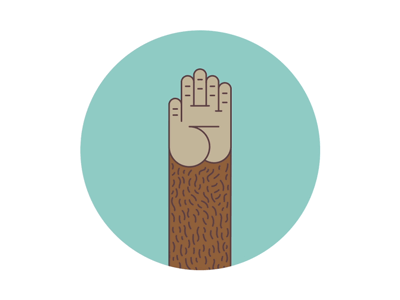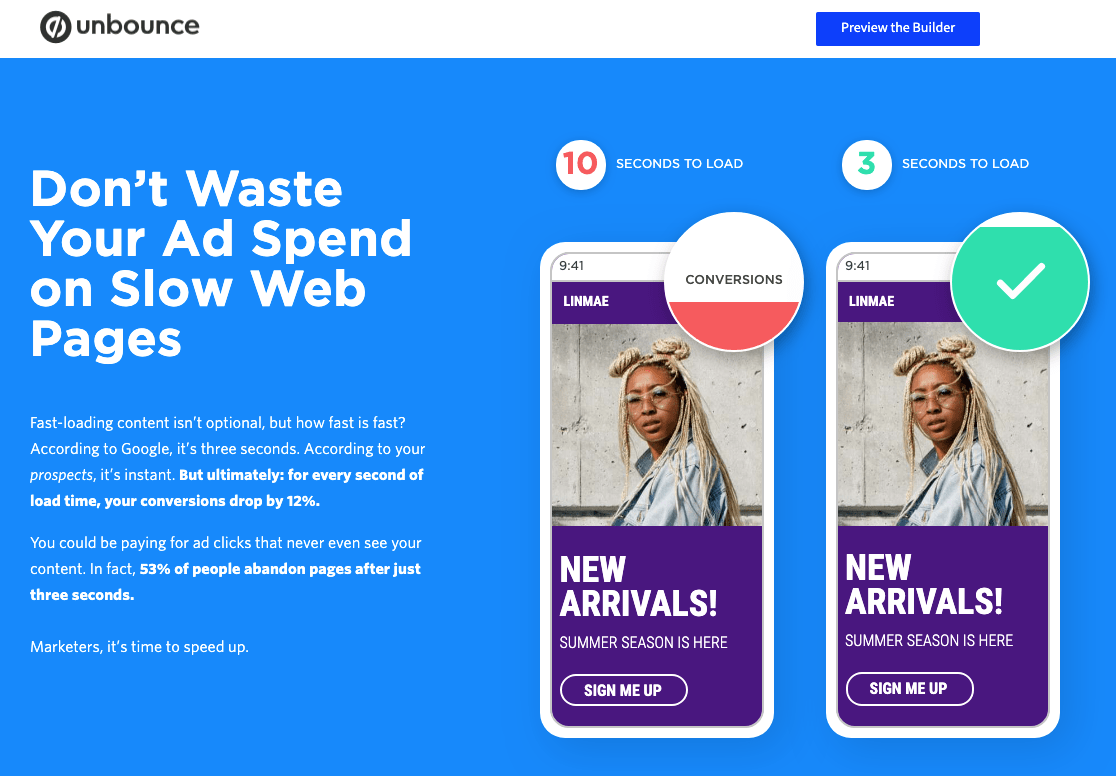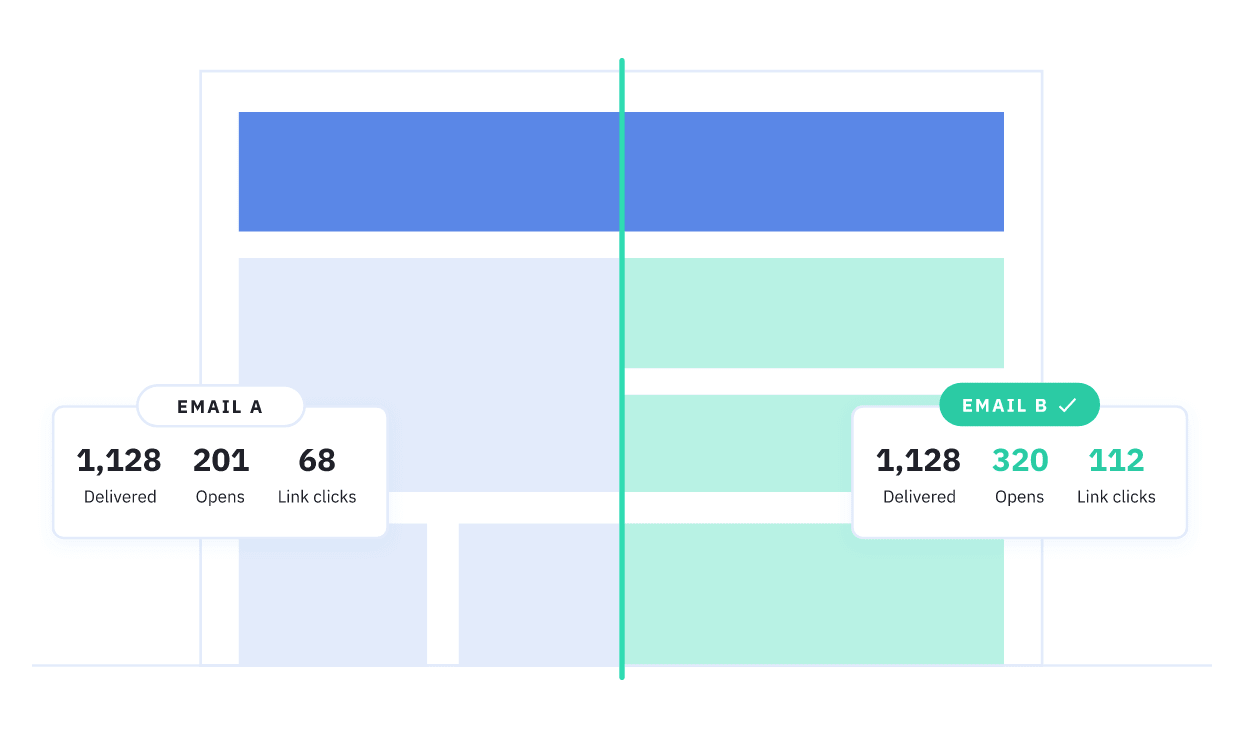Confirmation bias is a psychological habit where we interpret and remember information in a way that confirms our existing ideas and beliefs. Essentially, we’re geared to favour information that tells us we’re correct and shun information to the contrary.
The term was first coined by English psychologist Peter Wason in 1960, but marketers are still using this phenomenon to drive sales today.
To help illustrate how confirmation bias can boost your conversion rates, we’ve got seven working examples for you.
#1: Reinforce your brand image
The entire notion of confirmation bias is that people already have ideas in their head – and they’re difficult to change. Which means, if you have a strong brand image that people associate with, you simply need to “confirm” this with them when they land on your page.
In the case of Apple, consumers associate it with the highest premium tech gear. By maintaining this idea that “Anything you can do, you can do better” with Apple products is an incredibly simple, yet powerful use of confirmation bias.
#2: Use stereotypes and cliches to your advantage
We all know German cars are reliable, Japanese cameras are the finest and Columbian coffee is the stuff of kings. Except none of those stereotypes or cliches are any more true than the other lies we tell ourselves on a daily basis.
The good news is you can use these preconceived ideas to your advantage, thanks to cognitive bias. When a German car manufacturer tells people their cars are reliable, few of them will question it. And people looking for the most reliable car on the market will be drawn to German automobiles regardless of how many reliable manufacturers there are out there.
#3: Show customers their money is safe
When consumers pay for something, they want to know their money is in good hands. So they’re looking out for reinforcements that tell them they can trust you as a brand. This is why customer reviews, testimonials, money-back guarantees and lists of your best clients can have such a drastic impact on conversions.
With confirmation bias at work, consumers think “if it works for them, then it’ll work for me” and they’re less protective over their money.
#4: Become your target audience
Ever wonder why some people identify so strongly with some brands more than others? It’s because they associate a part of themselves or the person they aspire to be with said brand. If you’ve ever felt yourself saying “This is the company for me!”, there’s every chance your own cognitive bias has been triggered.
Images are incredibly powerful here, literally showing users the kind of person they’ll be with your brand.
Notice the different approaches of Ultra Light Outdoor Gear and Cotswold – two of the UK’s leading outdoor clothing and equipment retailers.
ULOG goes for images that show people making porridge in the wilderness, sleeping outside and mountain climbers in mid-swing. These are real adventure seekers (or people who see themselves/aspire to be) that the brand is targeting.
Meanwhile, Costwold goes for images that look more like a rugged fashion brand. there’s far more emphasis on look and style than pitched tents and outdoor stoves, even though it sells many of the same product categories as ULOG.
By mirroring your target audience and the person they consider themselves or aspire to be, you’ll confirm that you’re the brand for them.
#5: Know your audience’s pain points
When people have a problem they want to believe there’s a solution out there for them. This is where the concept of pain points comes from in marketing. Know what bugs your target audience the most and position yourself as the solution.
This works in two stages. First confirmation bias tells users that, yes, they do in fact have the problem you’re talking about. And, more importantly, it confirms the news they’re hoping for: that there is a solution and you can provide it.
#6: Retain your existing customers
One of the most important uses of confirmation bias is retaining customers and turning them into repeat buyers. When someone buys a product, the first thing they want to do is rationalise their purchase. They want to justify their buying choice and this is especially true for the more expensive or significant purchases.
Which means you need to eradicate the risk of buyer remorse that could result in cancelled orders or unhappy customers. The good news is confirmation bias makes it pretty easy to convince your customers that they made the right choice.
Product/service quality is the first thing you need to establish, which includes a solid customer service system to help ease any issues they might have. You can sweeten the deal further with freebies, add-ons, vouchers and other rewards for their initial purchase. Help them get the best out of your product/service with free guides and tools – e.g.: free Photoshop plugins for creatives.
Once your customers are fully happy with their initial buying choice, it’s time to turn them into repeat buyers and brand advocates. Call them loyal customers, set milestones and rewards for using your product or service. MailChimp’s famous high five micro-interaction gives users a subtle sense of satisfaction for sending a campaign live. These small touches make a blog difference across the entire platform.
#7: Avoid the confirmation bias trap yourself
A challenge we all face as marketers is keeping ourselves free of confirmation bias. This is particularly true with conversion optimisation where we make changes and run tests with preconceived ideas. Data can quickly start telling us what we want it to tell us and minor test results are easily exaggerated.
The danger is we could end up choosing a test result that isn’t as positive as we like to think or potentially ignore a variation that actually increases conversions.
Remember, we’re all geared towards confirmation bias influencing our choices. Learn how to use it to your advantage with your marketing messages, but also how to stop yourself from getting suckered into it as well.
The power of confirmation bias
The truth is we’re suckers for believing what we want to believe. As marketers, it’s much easier for us to roll with people’s preconceived ideas than try to change them and this is the entire premise of using confirmation bias in marketing.
It’s an incredibly powerful psychological characteristic we all share. But we have to remember we’re just as susceptible as our target clients – especially when it comes to data and conversion optimisation.











